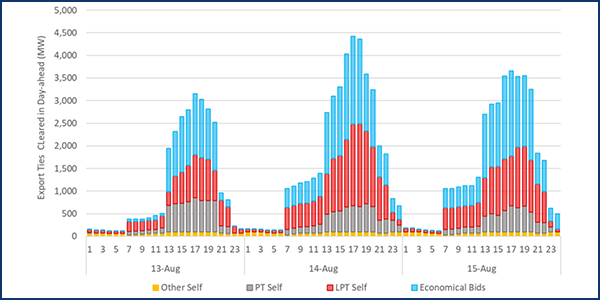A former president of the California Public Utilities Commission said Tuesday that the state attorney general should look into the rolling blackouts of mid-August with an eye toward signs of market manipulation in CAISO’s grid.
Loretta Lynch, CPUC president from 2000 to 2002 and a commissioner through 2005, spoke during a webinar held by the Clean Coalition, a Santa Barbara, Calif., group that advocates for renewable energy and microgrids.
“I think it’s time for the California attorney general to investigate what happened at the ISO and, more than that, the ISO’s market practices that can’t keep the lights on,” Lynch said.
California should have had ample supply to meet peak demand this summer, including Aug. 14-15, when CAISO ordered rolling blackouts, she said in her online presentation.
The state had ordered load-serving entities to procure nearly 53,000 MW for summer load, including a 15% reserve margin. Blackouts were ordered when demand was less than 46,000 MW on Aug. 14 and less than 45,000 MW on Aug. 15, she noted.
Lynch asked why CAISO had allowed large amounts of energy to be exported on those days despite knowing that a Western heat wave would stretch supply and limit imports.
“On Aug. 14, as Californians are being begged to conserve power, the ISO allowed over 4,000 MW of electricity to be exported out in the middle of an extreme heat wave despite the carefully constructed and planned-for demand forecast,” she said.
As a public benefit corporation, CAISO is primarily responsible for ensuring in-state reliability, and the attorney general has additional authority to investigate it, she said.
Like other critics, Lynch questioned the role that convergence bidding, a purely financial hedge, may have played in exacerbating the August shortages. CAISO maintained convergence bidding during the blackouts but stopped it in the days afterward, explaining that the practice was clouding its picture of physical supply.
To illustrate her points, Lynch used graphs from a joint report by CAISO, the CPUC and the California Energy Commission (CEC) on the causes of the August shortfalls. (See CAISO Says Constrained Tx Contributed to Blackouts.)
The preliminary root cause analysis will be followed by a final report in the coming weeks, CAISO has said. CalCCA Seeks ‘Objective’ Review of Blackout Report.)
CAISO spokeswoman Anne Gonzales said the ISO has been open and forthright in its take on what happened, including regarding exports.
Among its findings, the preliminary root cause report said that on Aug. 14 and 15, “under-scheduling of load [by LSEs’ scheduling coordinators] and convergence bidding clearing net supply signaled that more exports were supportable.”
That report “has been shared publicly and presented in a public hearing to the California State Assembly shortly after its release,” Gonzales said in an email. “The ISO, CEC and CPUC stand behind the preliminary findings and will continue to work on a final report, which will be completed by the end of the year.
“There has been no factual basis to suspect that market manipulation played a role in the August outages,” she said.




